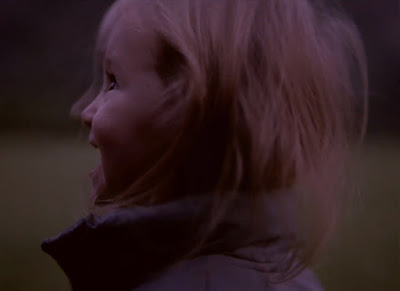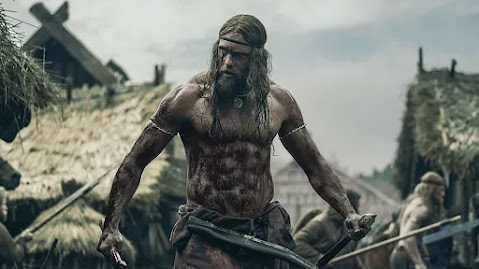Okja
Humor Me
 |
| Jemaine Clement and Elliott Gould in Humor Me |
An expansion of Hoffman's show, "Old Jews Telling Jokes", the film is utterly predictable. Jemaine Clement plays a stunted playwright dealing with the fallout of an unexpected divorce. He is forced to seek the shelter of his father's house in a senior community monikered "Cranberry Bog". The jokes write themselves. There is power walking, seniors going to pot, and an octogenarian puts the make on Clement. A ramshackle production number from The Mikado suddenly turns magical in the last reel and there is a brush with death, happily averted.
Gould plays Clément's dad. He uses humor to deflect questions that provoke his fears and anxieties. Black and white interludes illustrate his lengthy jokes. Joey Slotnick, forever fated to be a second banana, is wonderful as "Zimmerman", the perpetual protagonist of the gags. These joke sequences suggest not only alternate worlds to the drab reality of "Cranberry Bog", but different perspectives from which to view the calamities of life.
What won me over to Humor Me, despite it formulaic nature, was the warmth and dexterity of its (well) cast. Elliott Gould was born to play an old Jew. Annie Potts is a delicious Yum-Yum. Clement is too ugly and inert to be a popular leading man, but he is expert at playing off his fellow actors. He establishes an easy rapport with both Gould and Ingrid Michaelson, who plays his romantic interest. Mike Hodge, Bebe Neuwirth, and Priscilla Lopez all have nice moments. Hoffman overdoes the horny senior bits, but keeps the pace brisk. Comedy is hard, folks, and you could do worse than this inconsequential and pleasant film.
Let Me In
 |
| Kodi Smit-McPhee and Chloe Grace Moretz in Let Me In |
Post Tenebras Lux

Carlos Reygadas' Post Tenebras Lux, from 2012, is a bewildering art film that packs a punch as a pagan hymn to the beauty of nature. The film has no plot to speak of, but does loosely follow members of an elite Mexican family across time and, at least, two continents. Despite their relative affluence, most of the clan are unhappy. Listlessly, they pursue their appetites, be it at a Christmas feast or a sex club. A sequence at an AA meeting populated by rural laborers demonstrates that Reygadas does not believe modern malaises are limited to the upper crust. The film is one designed to be grokked, rather than give us catharsis or an epiphany. There is no tidy moral, but an overflow of life.
Reygadas and his cinematographer Alexis Zab utilized beveled lenses to give the film a refracted look. Images, particularly the outdoor sequences, consist of gorgeous shots of horses, dogs, children, and twilight skies that have been given an extra twinkle. This stresses the magical nature of life that jaded adults, like myself, often overlook while getting caught up in the daily grind. Shots are often at a dog's eye level. Thus, when the protagonist brutally punishes one of his dogs, we cannot but condemn his actions as evil.
That the protagonist seems to be a stand-in for Reygadas adds to the queasy complexity of the viewing experience. A visit to the families' abode by the devil, reminiscent of the zombie bunnies in David Lynch's Inland Empire, seems trite. However, those who seek adventurous cinema, like that of Mr. Lynch, will find many rewarding moments in these flickering images.
Aurora
Cristi Puiu's Aurora, a long art film from 2010 that is both agonizing and exhilarating, takes the who out of the whodunit. The director plays the main character, a sociopath who commits multiple murders. The rationale for the crimes is hard to fathom, but not the main character's pathology. Puiu's warts and all commitment to the role is one of the most harrowing and self-abnegating performances I have ever witnessed. A scene where he takes a shower and prods his midsection to adjust a hernia gives a good idea of the lengths Puiu has gone to in laying out this very repellent character for us.
Some viewers are going to be bored or highly frustrated by this vexing film, but I was intrigued. Puiu gives us mostly mid-shots, often backgrounding the action down a hallway or corridor. The drama of this film, or lack thereof, is continually hidden or partially obscured. The film is a trudge through the labyrinth of a sick mind and, from what we see of Romanian society, a sick culture.
Puiu foregrounds the banality of bourgeois culture, much like another tale of murder: Chantal Akerman's Jeanne Dielman. Ugly, half finished walls in cramped apartments are the hallmarks of this bitter and uncompromising film, one that is best left to aficionados of European art films and not the general audience.
Parallel Mothers
 |
| Penelope Cruz and Milena Smit are Parallel Mothers |
Ned Rifle
 |
| Aubrey Plaza and Liam Aiken in Ned Rifle |
Silver Lode

Alan Dwan's Silver Lode, from 1954, is a good B Western. The film, like that year's Johnny Guitar, is a cautionary allegory about McCarthyism. The villain is not too subtly monikered "McCarty". Four self-proclaimed lawmen ride into the town and accuse a solid citizen of perfidy. The town, done up in red, white, and blue bunting for a Fourth of July celebration, soon descends into paranoia, distrust, and violence. A host of familiar players are in the cast: John Payne, Lizabeth Scott, Dolores Moran, Emile Meyer, Alan Hale Jr., Harry Carey Jr. The acting laurels go to Dan Duryea for his usual masterful portrayal of anguine cunning. Dwan, at this stage of his long career, was an expert at cranking out taut B pictures. He groups his players (as above) most often in the efficient American shot. When appropriate, he was still capable of bravura effects: a long tracking through town capturing an extended gunfight brilliantly evokes a community's descent into madness.
Doctor Strange in the Multiverse of Madness
Bounty Killer, The Witch
 |
| Bounty Killer |
 |
| The Witch |
Quick Takes, May, 2022
 |
| Paul Henreid and Rex Harrison in Night Train to Munich |
Love and Friendship
 |
| Kate Beckinsale |
Stillman tries to recapture the chemistry of his Last Days of Disco by reuniting Beckinsale with Chloe Sevigny, but Sevigny can't quite handle the period dialogue and the twosome's bitchy asides are a bit wanting. Generally, the cast is up to snuff with Tom Bennett a particular delight as the moronic Sir James Martin.
I must confess that Austen's reputation has always left me mystified. Her fans seem to adore her work because she critiques a safe target, snobbery, within a cozy genre, the romantic comedy. Her literary constructs are charming and tidy, but hold very little relation to life as I know it; which I find to be disorienting and messy. In other words, I'll take George Eliot or Dostoyevsky, please. That said, Stillman distills the most entertaining aspects of Austen and adds a post-feminist knowingness that punctures the Georgian decorum. All in all, the most interesting Austen adaptation since Patricia Rozema's Mansfield Park. (7/3/17)
The Northman
 |
| Alexander Skarsgard in The Northman |
The Southerner
 |
| Zachary Scott and J. Carrol Naish |
The Southerner is a rural picture much like Renoir's first American feature, Swamp Water. This genre was in serious decline by 1945, ten years after Variety declared "Sticks Nix Hix Pix". My first exposure to hix pix were the Ma and Pa Kettle films, themselves a spin-off from The Egg and I, of the 40s and early 50s which I could not abide as a child. The hayseed humor of the films seem old hat to me in the 60s.
Beulah Bondi's Granny is the comic relief here and I found her performance, which rankled contemporary critics, to be hilarious. Like Walter Brennan in Rio Bravo, Bondi's performance is a riff on the stereotype of the crusty codger. It is an outsized act which is cognizant of its own ridiculousness. Contrast her work with that of Betty Field. Field is a competent performer, but her work here seems off. She presents her character as is she were the platonic ideal of a farmer's wife and the result is not pathos, but bathos. J. Carrol Naish is wonderful as the neighbor who lacks a communitarian spirit.
Memoria (2021)
 |
| The 1.85:1 aspect ration foregrounds the background of Memoria |
Doctor Strange
The Batman
 |
| Robert Pattinson is The Batman |
The Batman has an outstanding cast, for the most part well chosen for their roles (though Andy Serkis seems too sinister to be an effective Alfred) , but they labor in vain. The film is a dark, elephantine genre piece devoid of subtlety, passion, and humanity.
Wonder Woman
Patty Jenkins' Wonder Woman marks a welcome return to the big screen for the director who guided Charlize Theron to an Oscar in Monster way back in 2003. Wonder Woman has been greeted with unprecedented hosannas by audiences and critics alike. I was diverted, but largely underwhelmed by this comic book fare. Since so many of the Marvel And DC features are pap, there is a general desire to embrace comic book films that have even a glimmer of intelligence. Wonder Woman has that glimmer and a nice dash of romance, but is largely by the numbers.
The rote sections of Wonder Woman are its first and last parts. That the action packed finale is routine is not a surprise, but the first third is a lifeless picturing of the heroine's life among the Amazons. Even chunks of cheese like Xena and Clash of the Titans have more zip to their refashioning of Greek myths. How I longed for a femme version of Ted Raimi's Joxer to show up and enliven the overly solemn proceedings. Happily, the second act perks up and morphs into a fish out of water comedy as our heroine plunges into 1918 London.
Wonder Woman is greatly helped by the chemistry of its romantic leads. Gal Gadot is a little stiff, but dark haired beauties such as Keanu Reeves and Gregory Peck were much more wooden at the beginning stage of what would prove to be long and fruitful careers. Chris Pine, as he did in Hell or High Water and even the wretched Into the Woods, proves he is one of our most versatile leading men. An asset to any film, Pine here underplays to make sure all eyes are on his leading lady. Unfortunately, as even the children in my multiplex audience complained, the secondary characters are under sketched and unmemorable. Talented folks like Danny Huston, Robin Wright, and David Thewlis hem and haw to little effect. The best scene Jenkins gives us is a woman and man alone on a boat. I hope Ms. Jenkins' next feature has a few less explosions and more personal moments such as this. (6/26/17)
-
Kwon Hae-hyo and Park Miso I know some peoples' eyes glaze over when a film is extolled for its physical beauty, but I found Hong Sang-s...
-
Adrien Brody and Guy Pearce Brady Corbet's The Brutalist is his strongest and most accomplished film. The script, written by Corbet and...
-
1) Second Place by Rachel Cusk Few, if any, recent novels has better captured the inner and outer tumult of ...
-
1). Tyler Childers --- Snipe Hunter 2). Little Simz --- ...
-
Alfie Williams and Ralph Fiennes 28 Years Later is not an afterthought or a superfluous sequel, but the best film thus far in the zombie fr...









